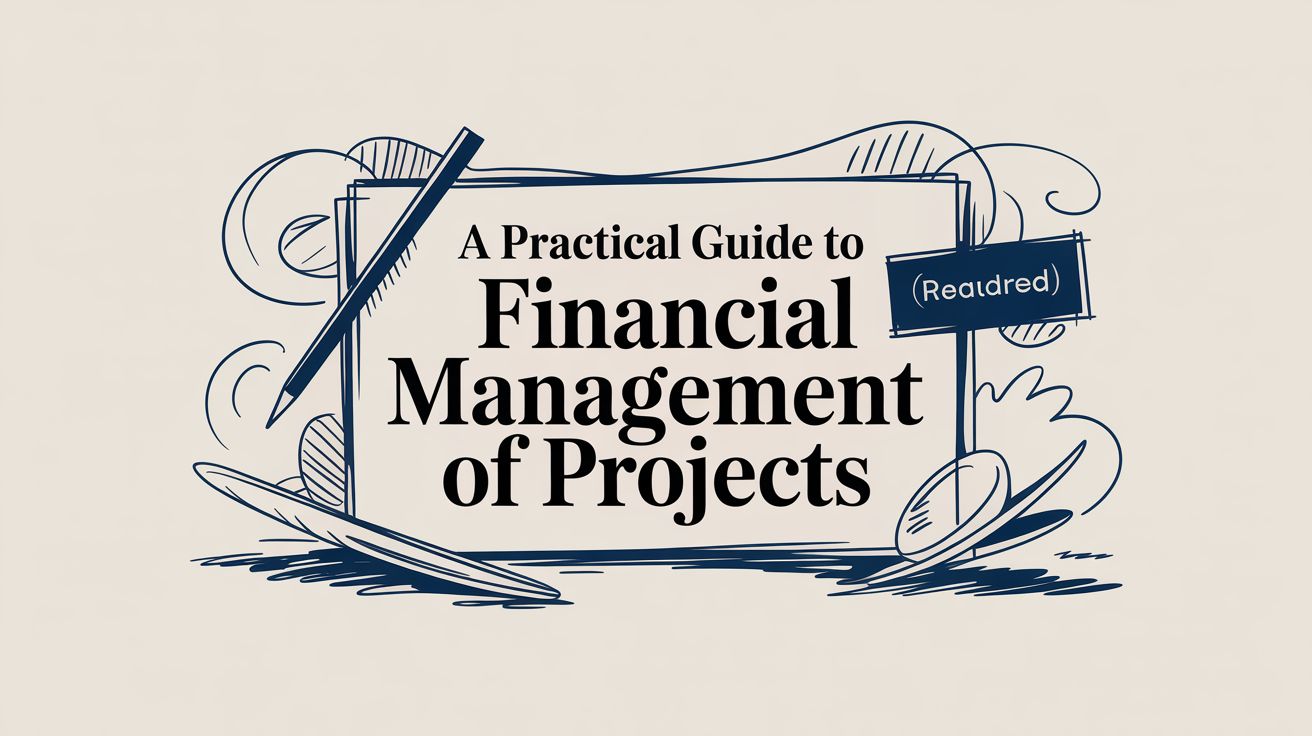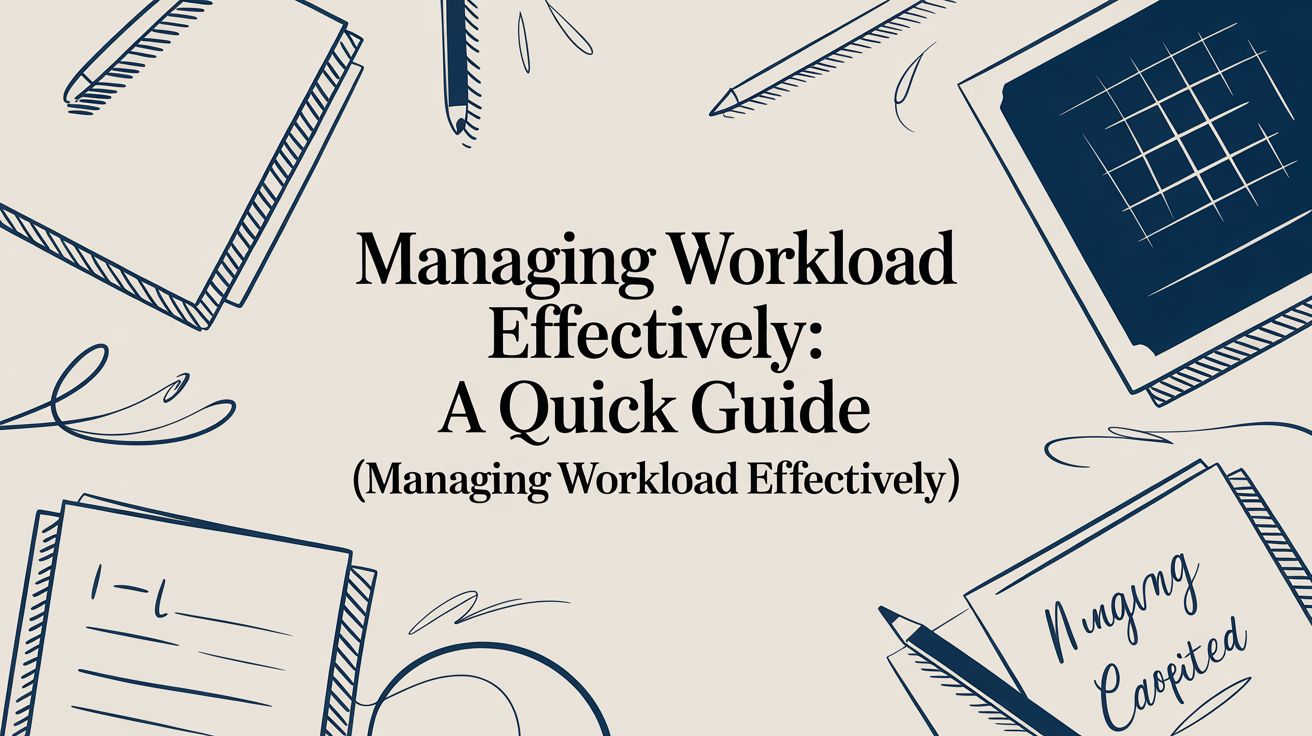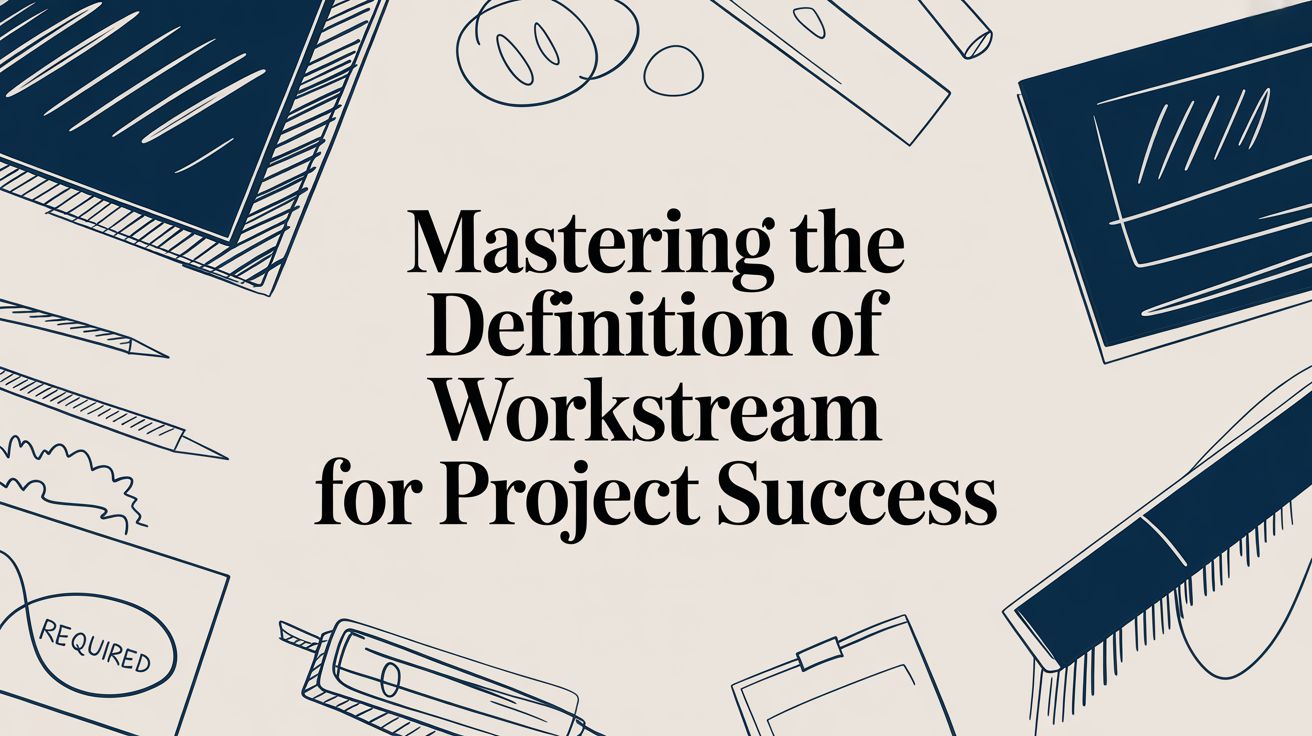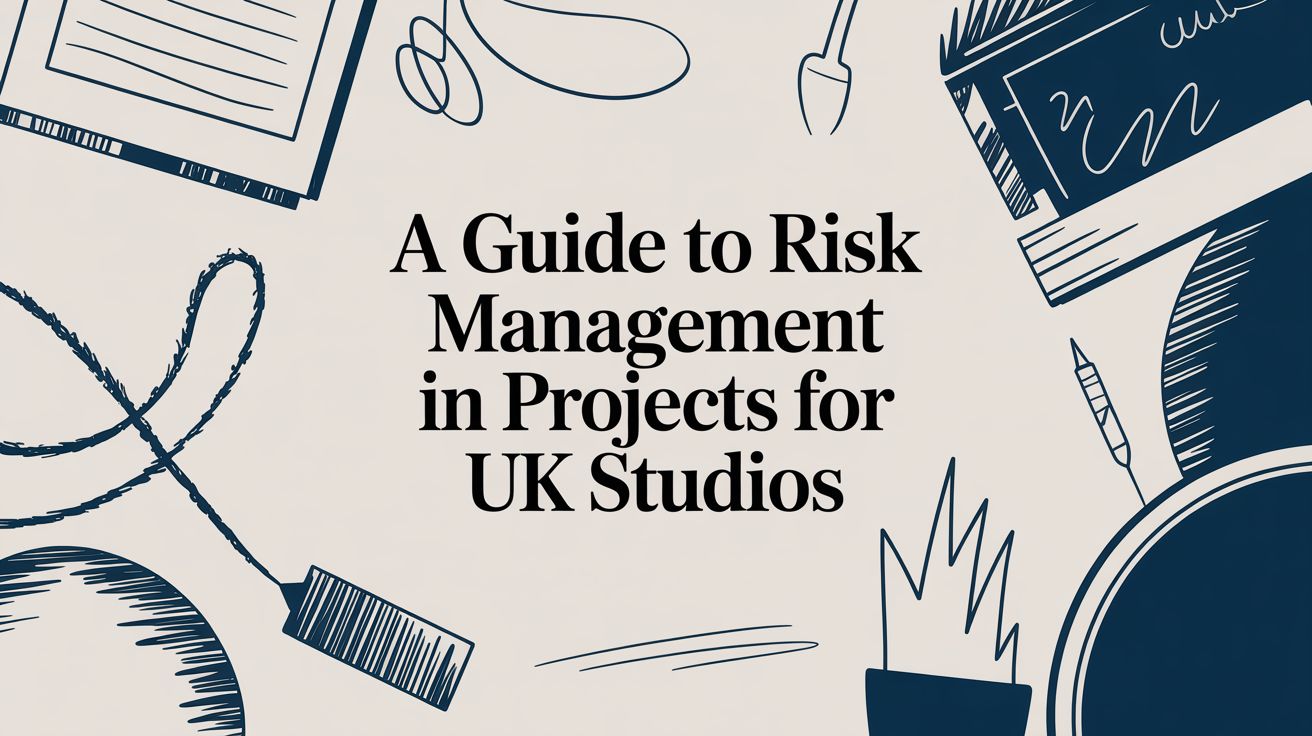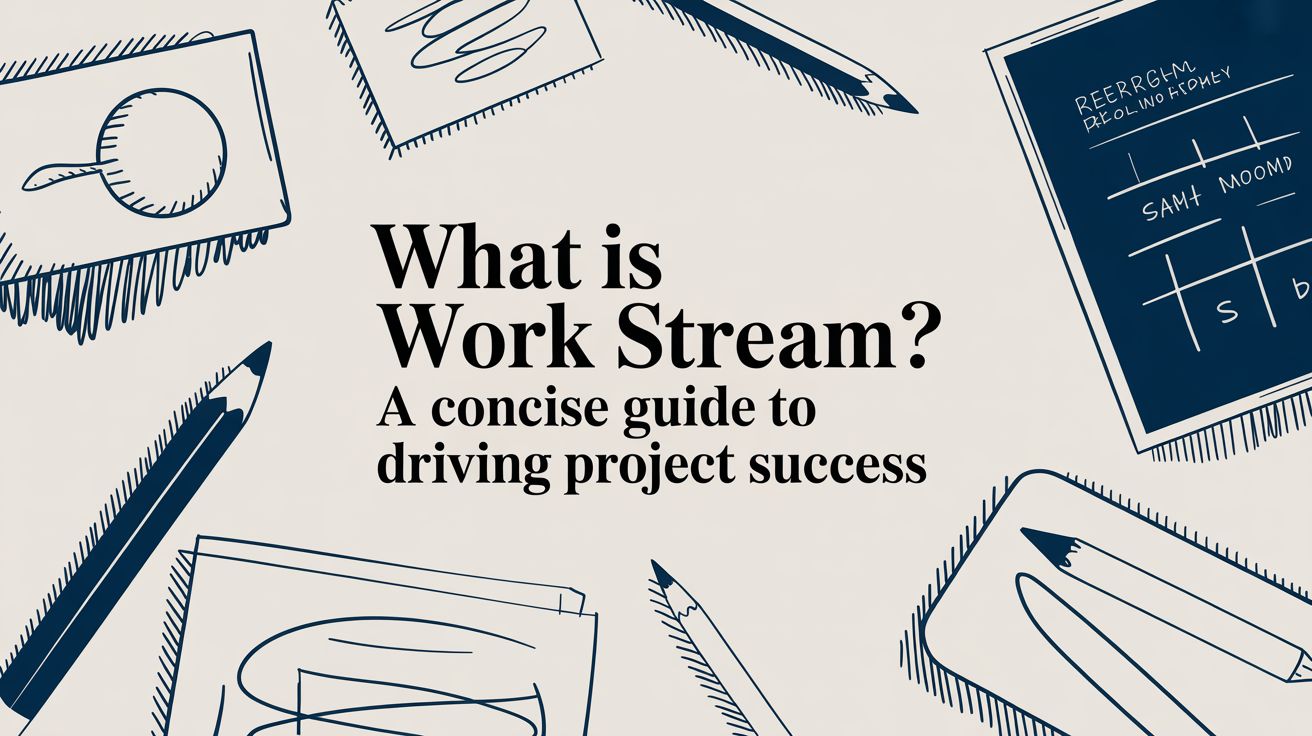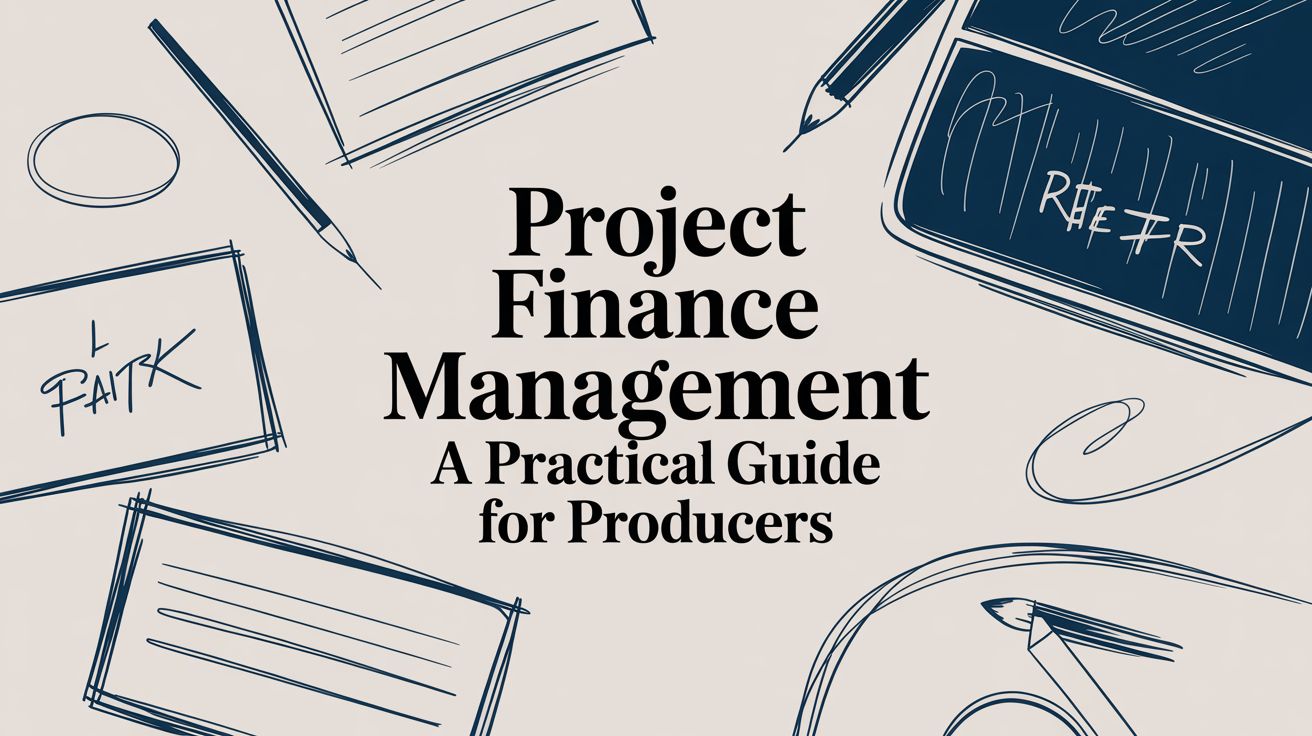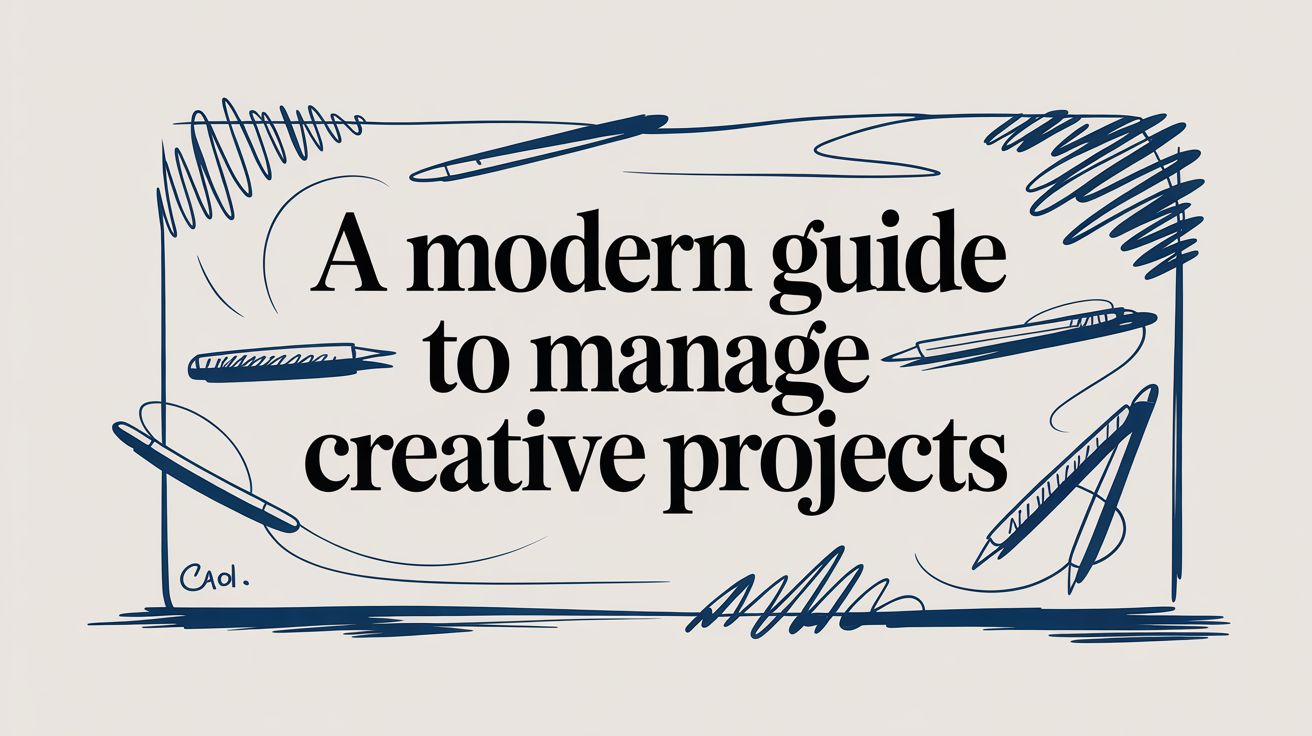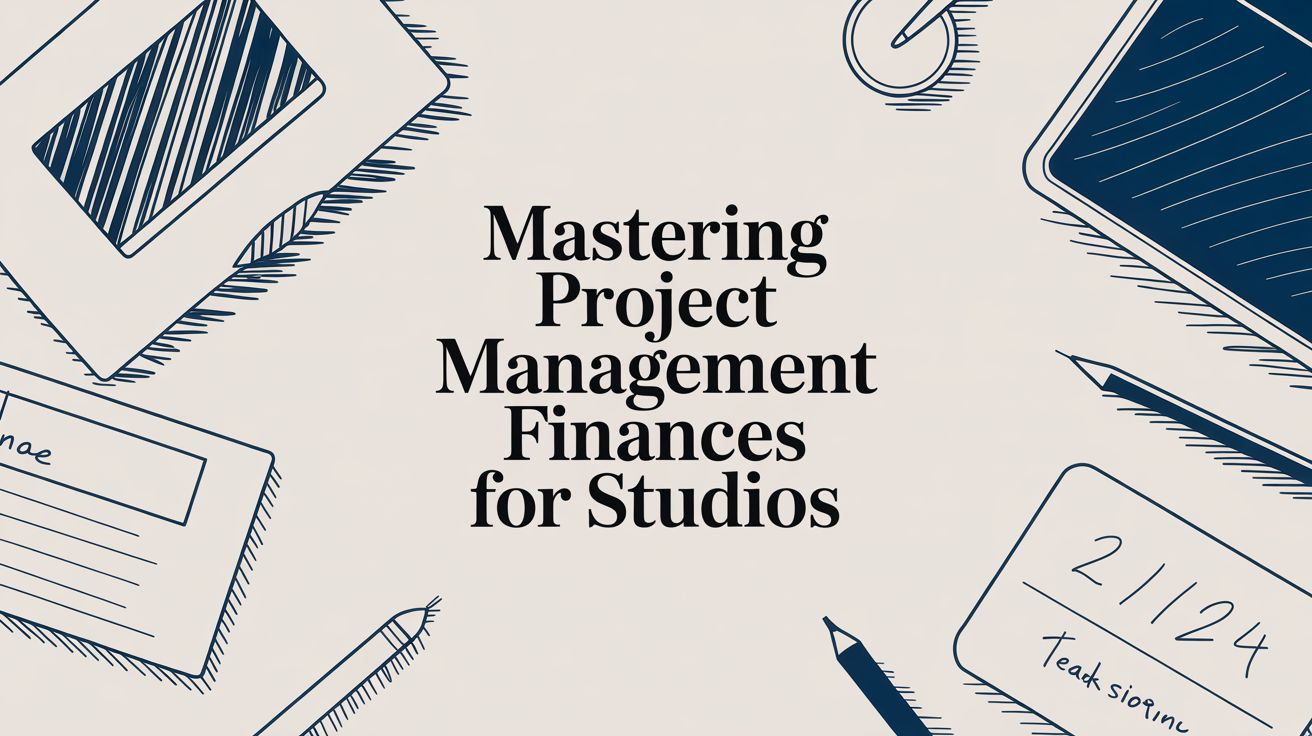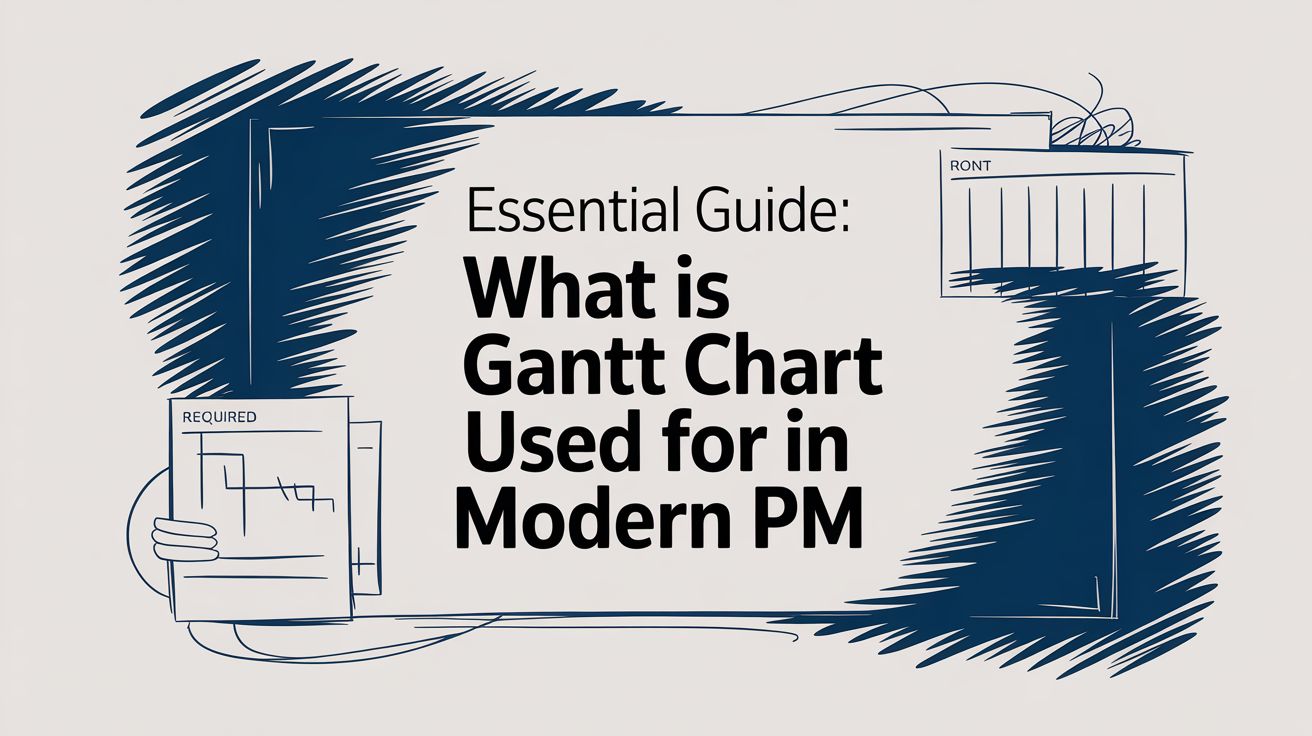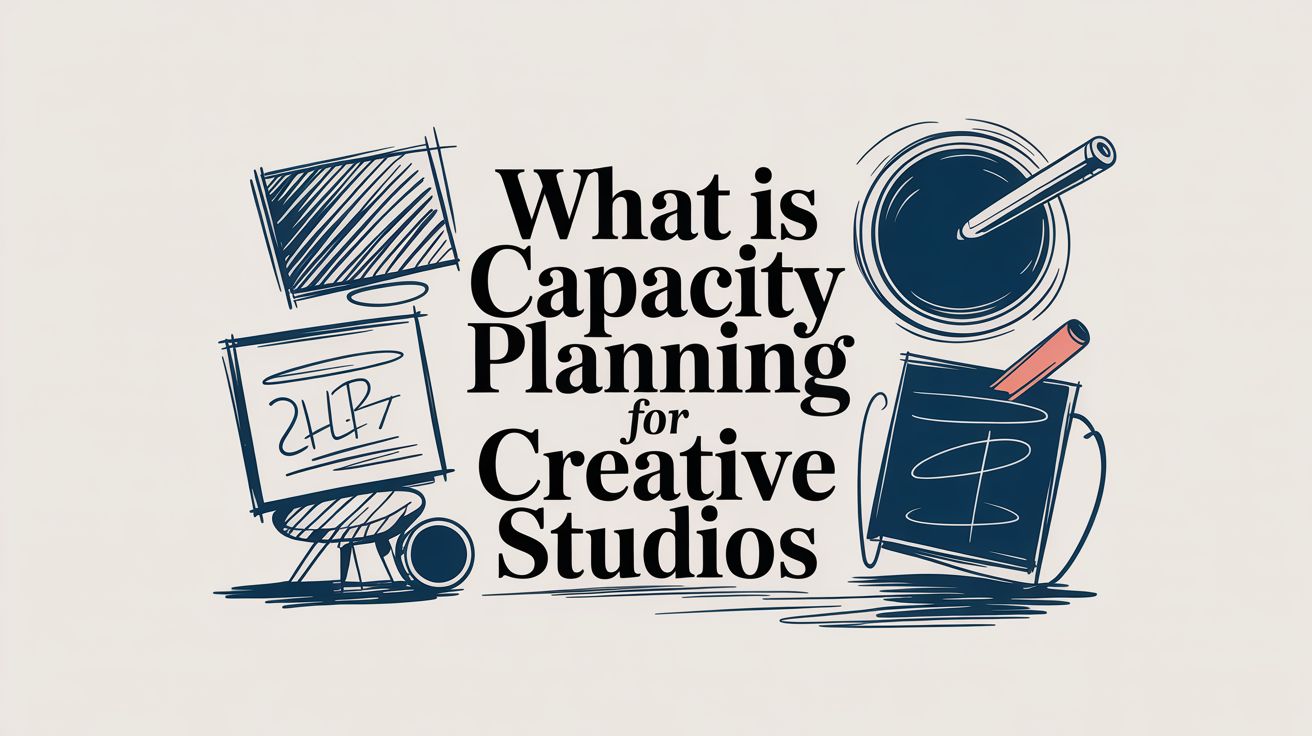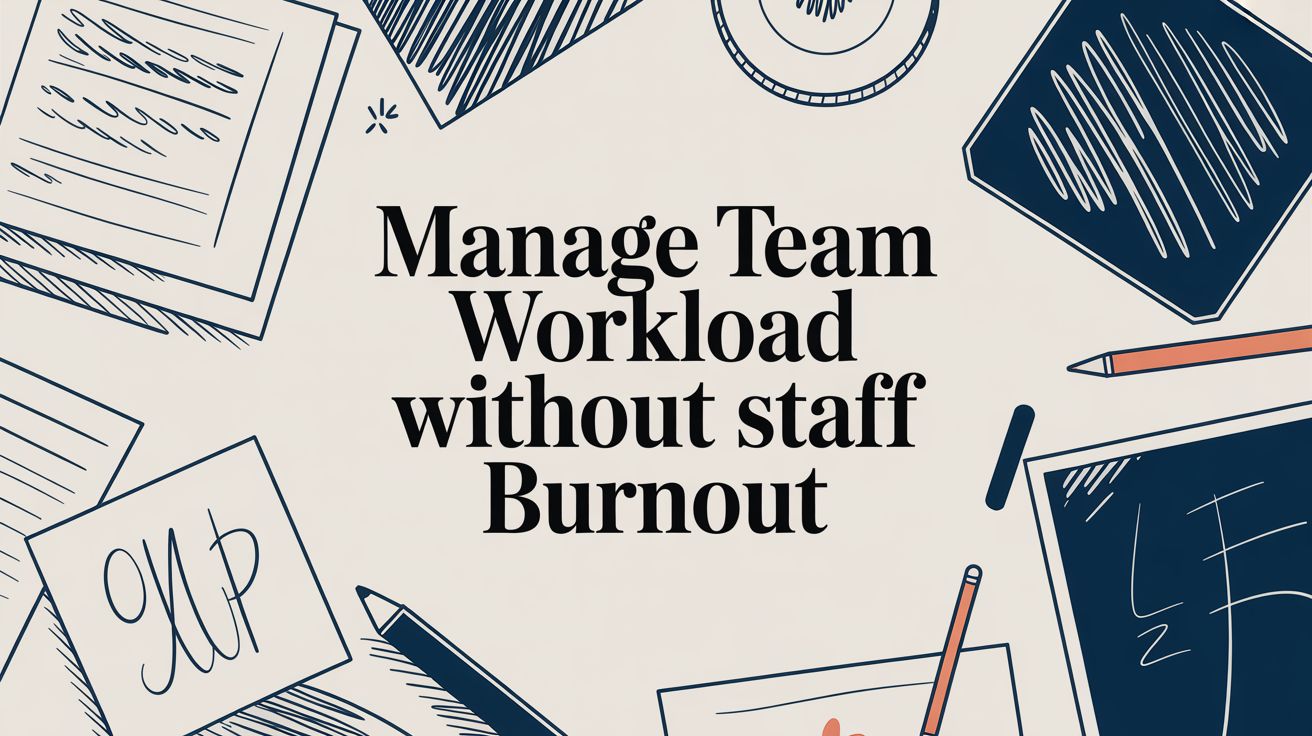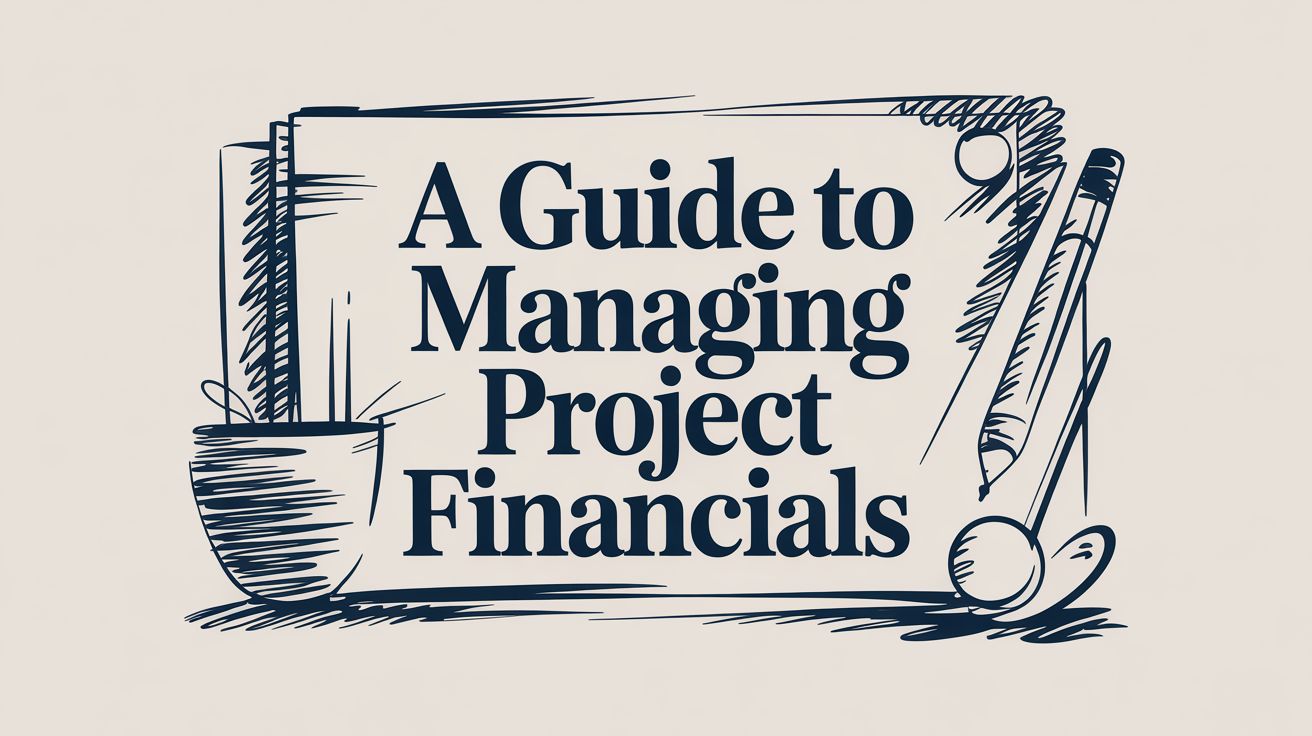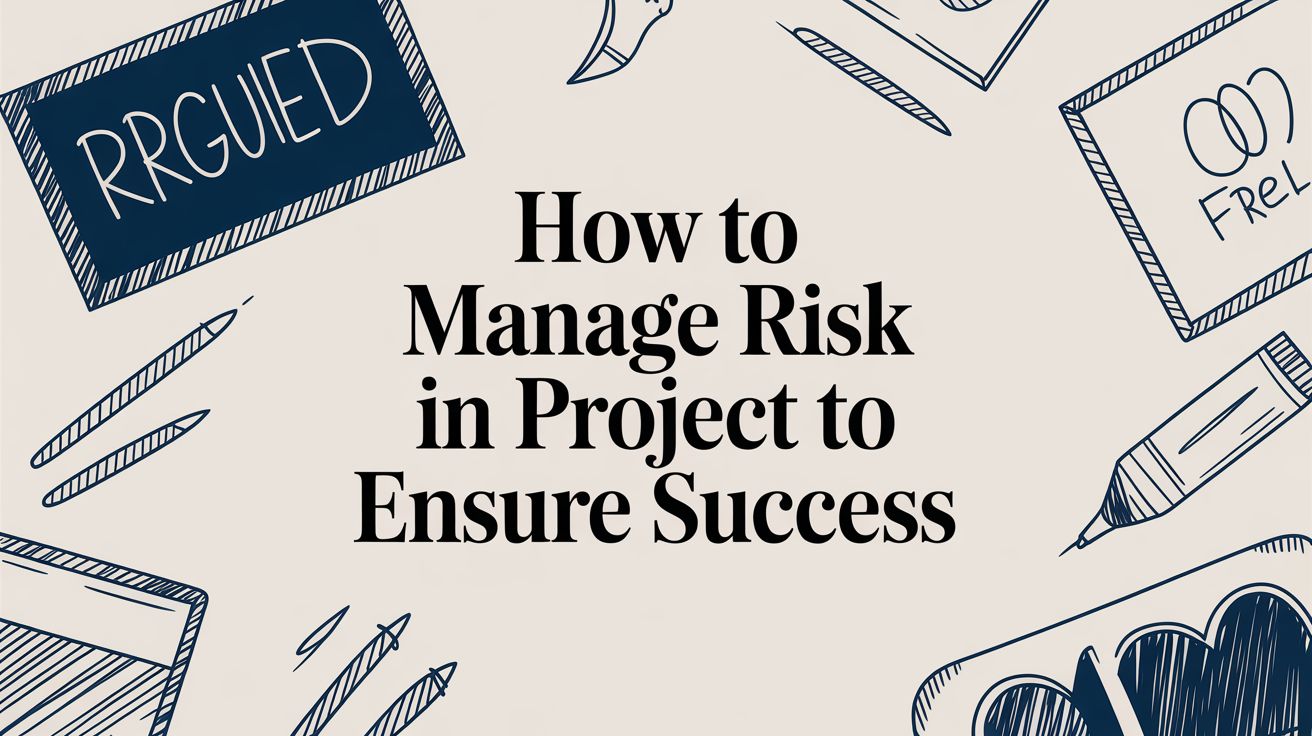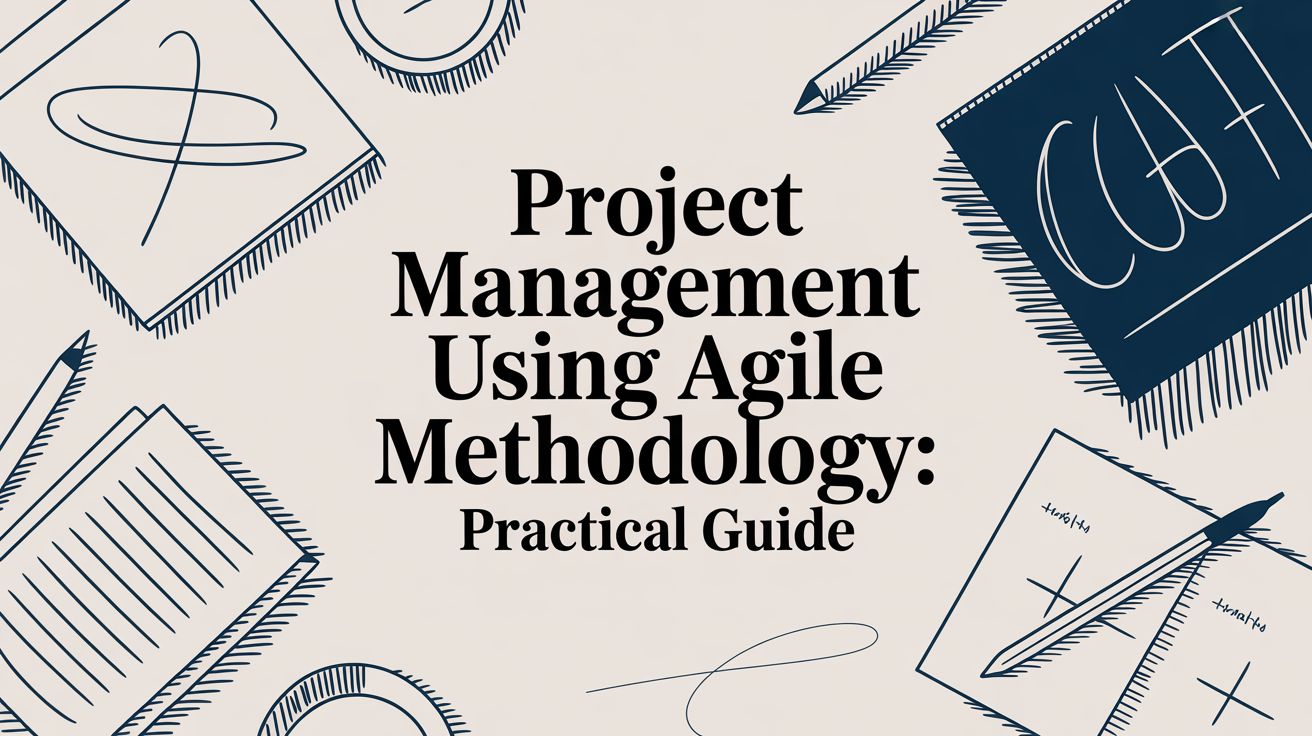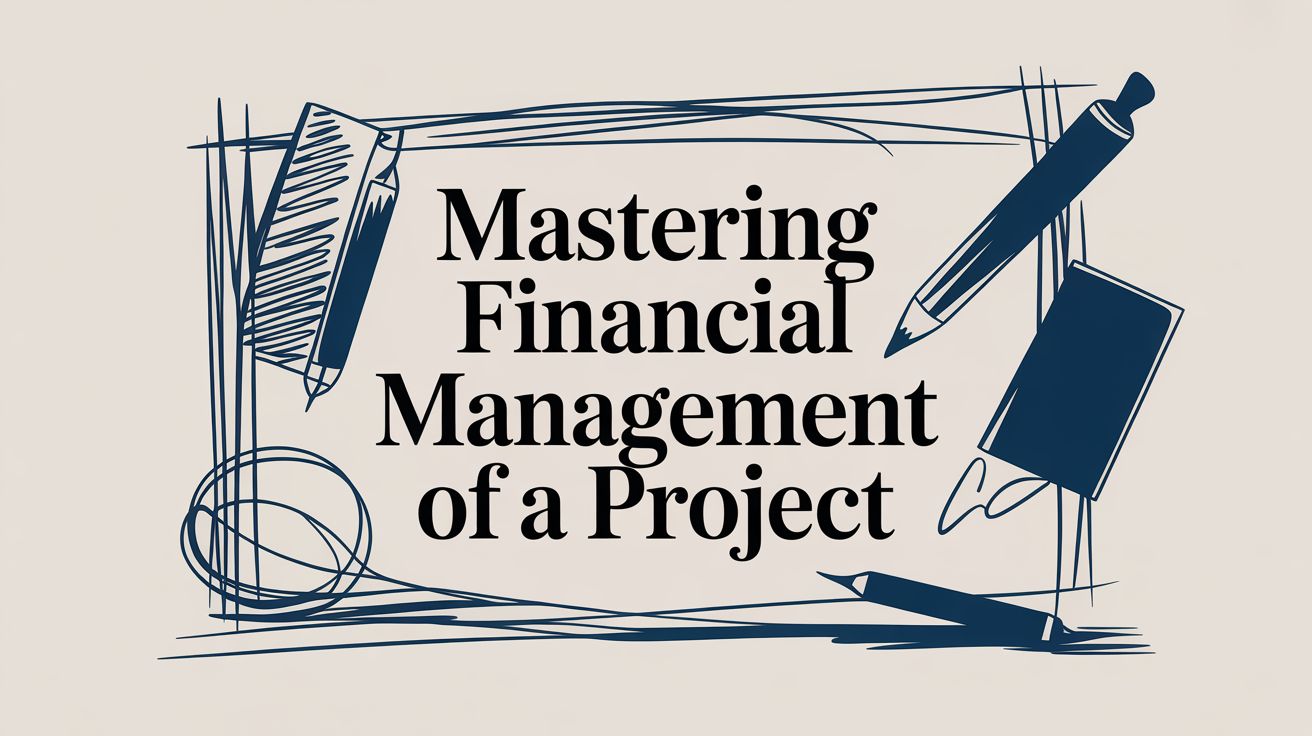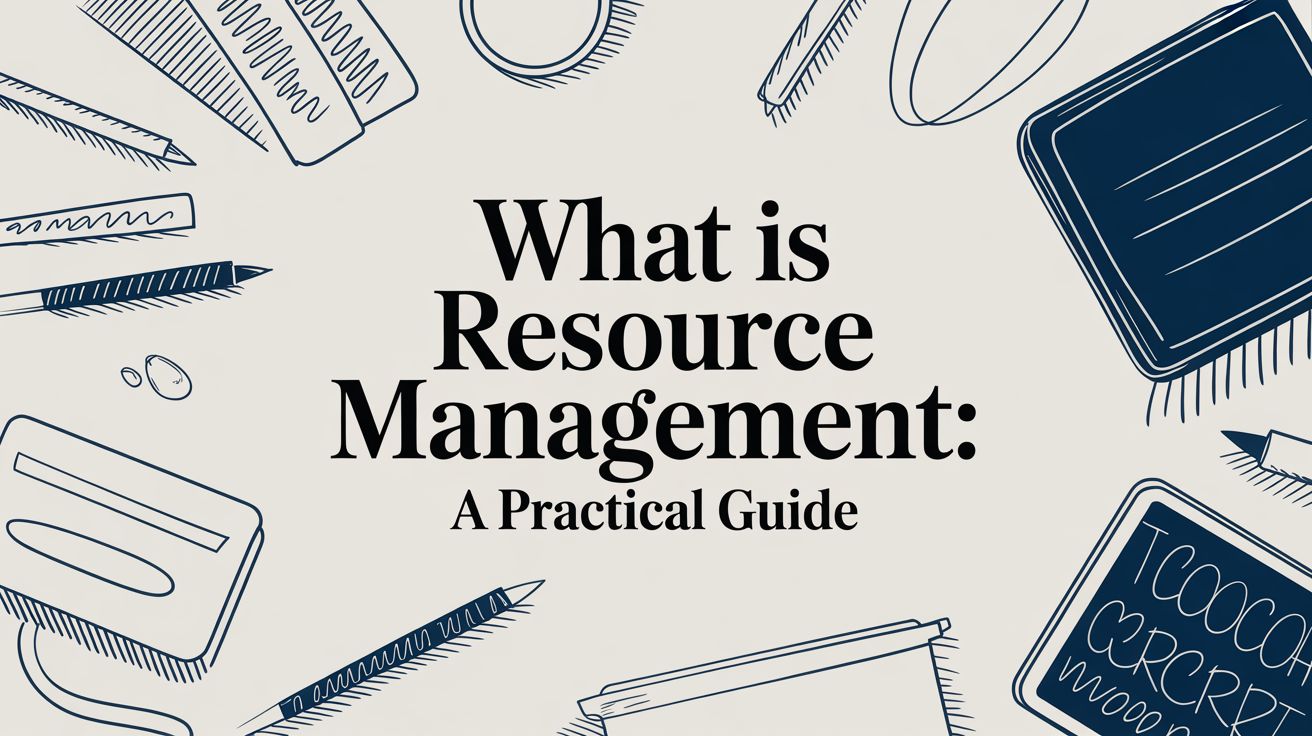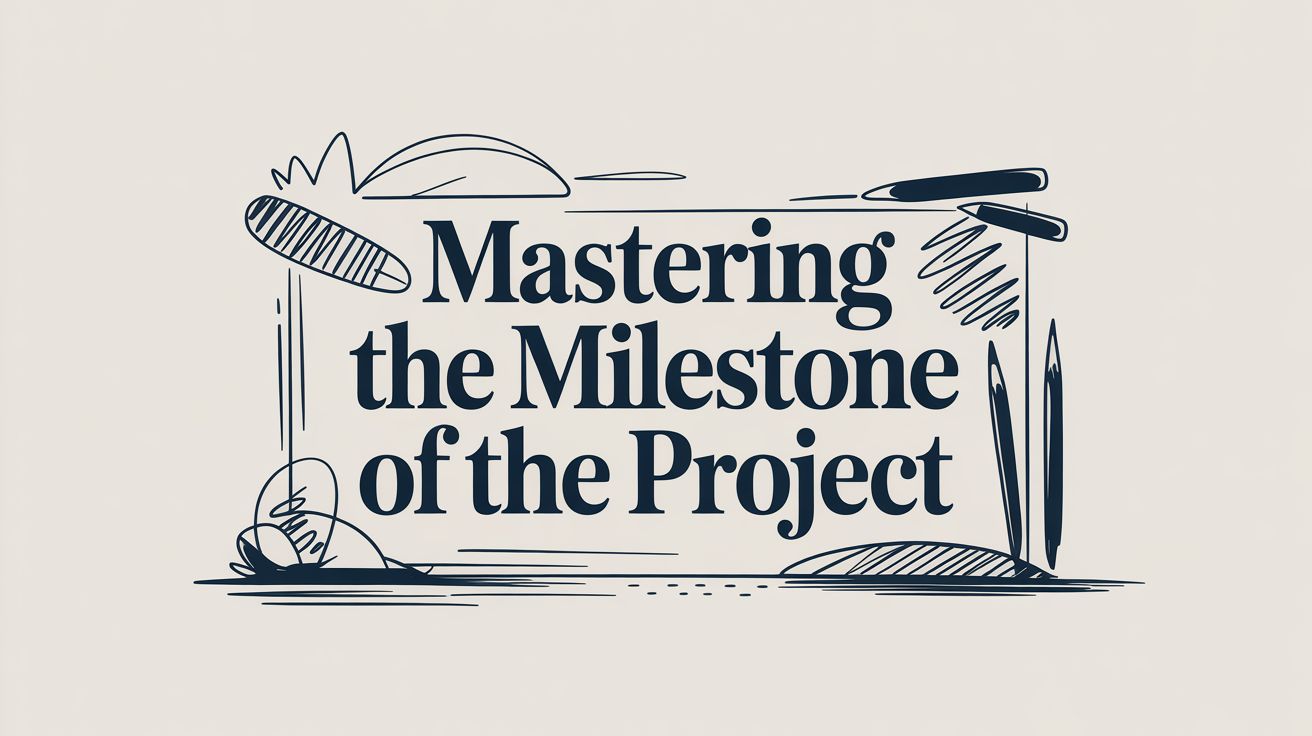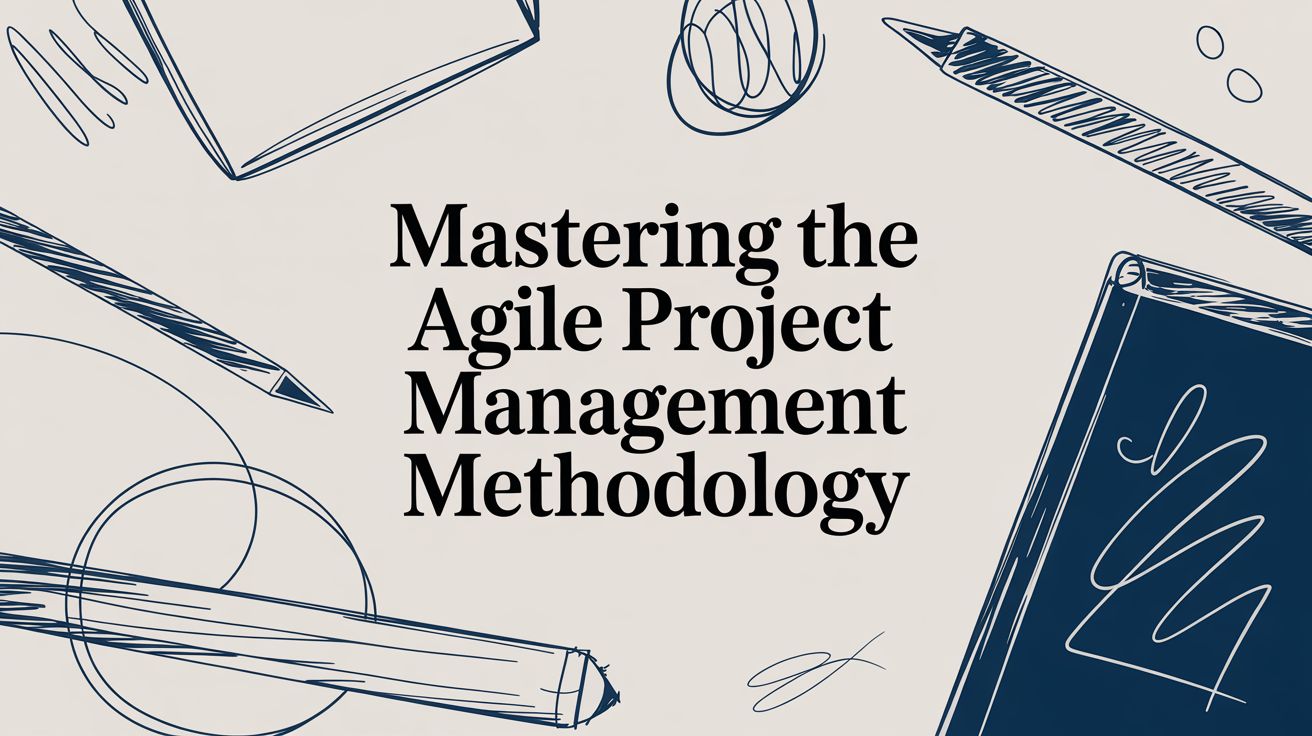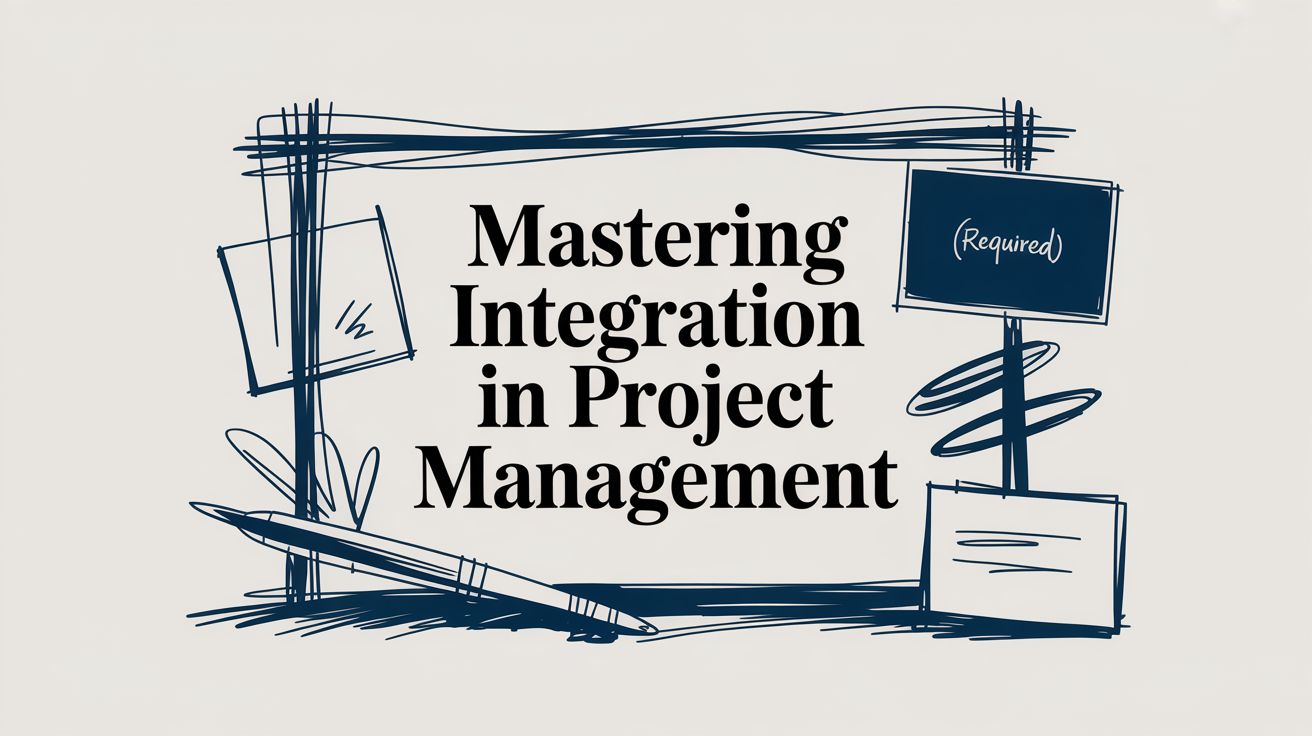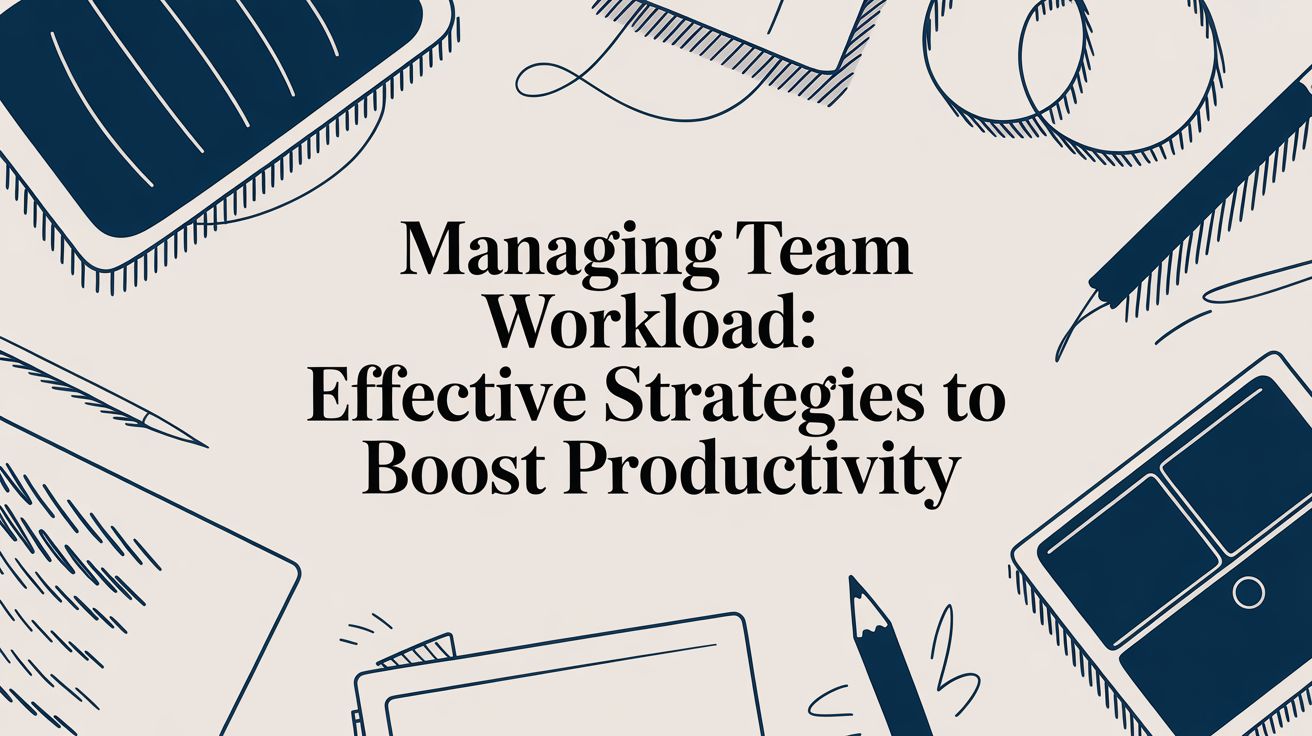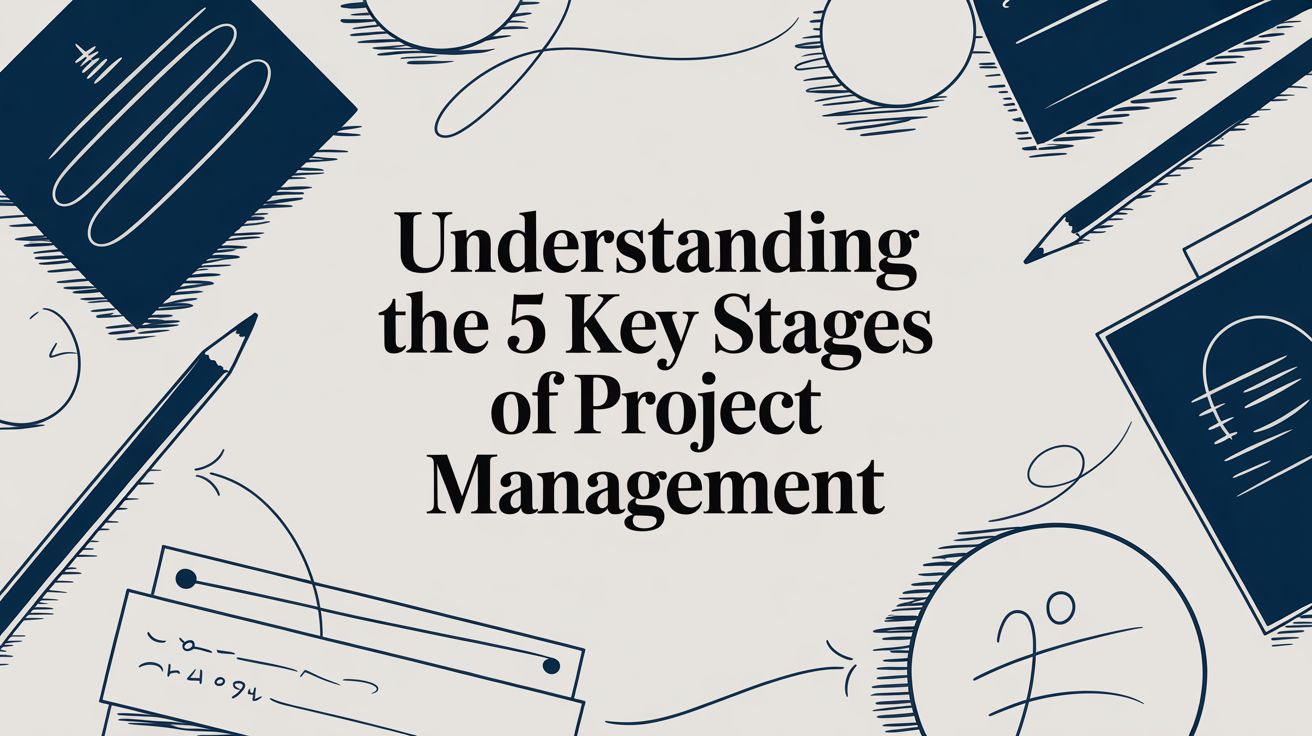When you hear the term project milestones, what comes to mind? They’re the big, signposted checkpoints that tell you you're making real headway towards your final goal. They aren't the small, daily tasks, but the major achievements like securing funding, completing a major design phase, or getting that final client approval.
Understanding the Project Milestone Framework
Let's imagine your project is a cross-country road trip. The final delivery is your destination, but how do you actually know you're on track? Project milestones are the major cities you pass through along the way—they're the critical checkpoints that prove you're making tangible progress. They aren't the little things like filling up the car with petrol (think of those as your daily to-dos), but significant achievements like ‘Crossing the Scottish Highlands’.
Essentially, milestones are there to validate that your project is moving in the right direction, on time and on budget.
To get this right, you need a clear framework. The best way to think about this is to organise your milestones across four core project phases: Initiation, Planning, Execution, and Closure. Each of these phases has its own set of critical checkpoints that signal you’ve completed a major stage of the journey.
Milestones transform a massive, intimidating project into a series of manageable, achievable goals. They provide focus, boost team morale with visible progress, and give stakeholders clear proof that their investment is paying off.
The Four Core Phases of a Project Lifecycle
Every project, no matter how big or small, follows a predictable lifecycle. By mapping your key milestones to these phases, you make sure nothing important gets missed.
To help visualise this, here’s a quick breakdown of what each phase is all about.
| Project Phase | Primary Objective |
|---|---|
| Initiation | Define the project's purpose, scope, and feasibility. |
| Planning | Develop the detailed roadmap and allocate resources. |
| Execution | Carry out the planned work and monitor progress. |
| Closure | Finalise all activities, deliver the outcome, and debrief. |
This structure ensures that you’re building on a solid foundation at every step.
The timeline below shows how these phases flow one after the other, taking you from the initial spark of an idea right through to the final project handover.
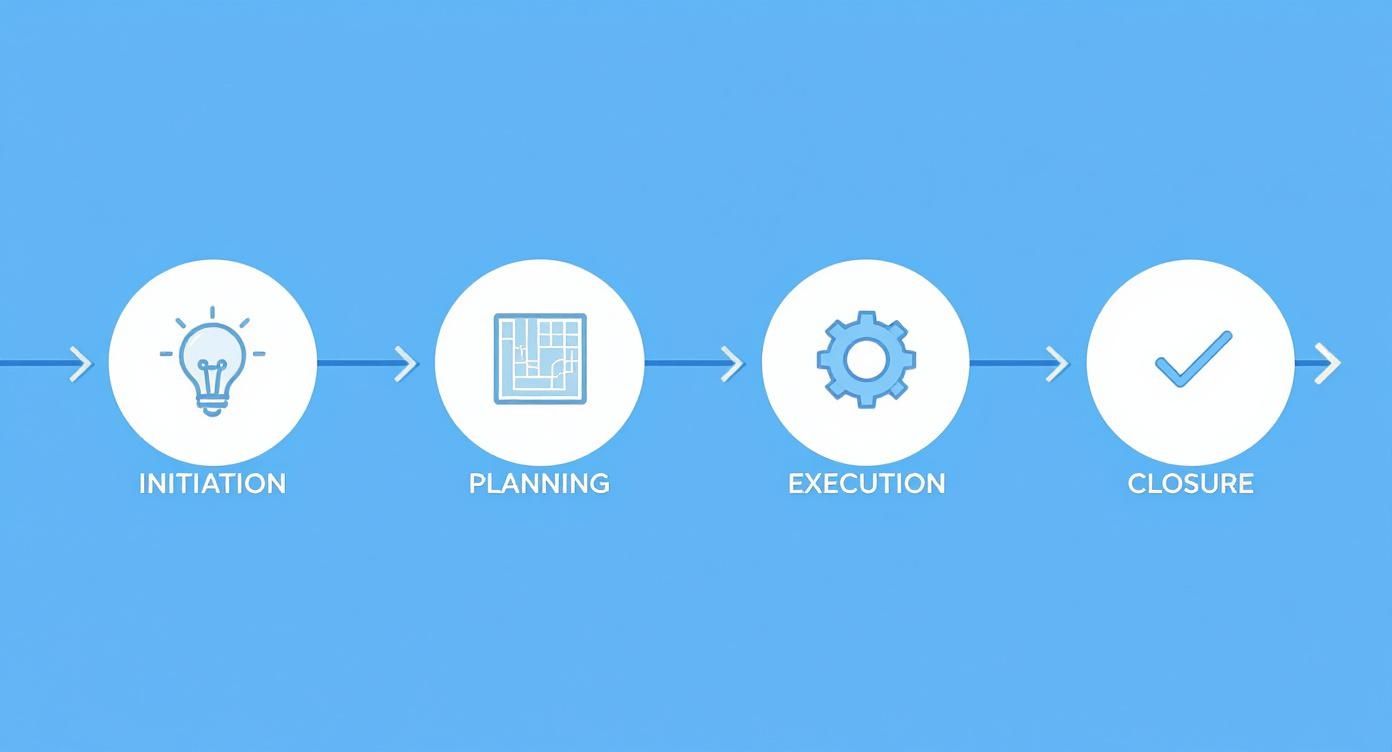
As you can see, each phase has to be properly completed before the next one can kick off. This makes the milestones within each phase crucial gatekeepers for the overall health of your project. Now that we've got the structure down, we can dive into the specific milestones that define each of these critical stages.
Building Your Foundation in Initiation and Planning

Every great project starts not with a chaotic burst of activity, but with a few deliberate, rock-solid steps. The very first milestones are all about initiation and planning, transforming a promising idea into a blueprint everyone can get behind.
Think of it like drawing up architectural plans before pouring a single drop of concrete. You wouldn't build a house without them, right? The same logic applies here. These early milestones make sure everyone agrees on the destination before the journey even begins.
Securing the Project Charter
The first major hurdle is getting the Project Charter approved. This document is essentially the project's official birth certificate. It formally authorises the project to exist and, crucially, gives the project manager the power to start assigning resources to get things done.
It lays out the core objectives, points out the main stakeholders, and sketches out the high-level scope and budget. Getting this signed is the official green light that turns a concept into a funded, recognised initiative.
Defining the Project Scope
Once the charter is signed off, the next vital milestone is finalising the Project Scope. This document acts as the project's guardrails, clearly defining what is—and just as importantly, what is not—part of the work.
This milestone is your best defence against "scope creep," that all-too-common problem where a project slowly balloons, derailing timelines and blowing up budgets. With a detailed scope, teams can focus their energy, and stakeholders know exactly what to expect. This is where solid project planning really sets the stage for a smooth ride.
A well-defined plan is the best defence against project failure. Getting these initial milestones right is the single best predictor of a positive outcome, preventing costly rework later on.
This structured approach isn't just theory; the numbers back it up. Mature organisations with solid project management processes see 77% of their projects meet their original goals. This drops to just 63% in less mature environments. The financial stakes are massive, too—poor performance can waste an average of 11.4% of investment. You can dig into more stats on the impact of project management maturity in this 2023 report.
Marking Progress During Execution and Monitoring

During this stage, milestones aren't about getting another approval; they're about concrete progress. They act as critical checkpoints, keeping the momentum going and letting you adjust course before a small bump in the road turns into a major detour.
Tracking Tangible Achievements
The milestones in this phase are all about proving the work is getting done. They give stakeholders solid proof that the project is moving forward as planned and creating actual value. Good tracking is everything here, shifting the focus from just ticking off tasks to measuring meaningful progress.
Common milestones during execution look like this:
- First Major Deliverable Complete: This is often the first time anyone outside the core team sees a working piece of the final product. It's a huge moment that proves the team's ability and confirms the initial planning was sound.
- Mid-Project Review Passed: A formal check-in to see how things are tracking against the original plan. It's the perfect time to review any risks and make sure the project is still aiming for the right target.
- User Acceptance Testing (UAT) Passed: This one is massive. UAT confirms that you’ve not only built the product correctly, but more importantly, that you’ve built the right product that people actually want to use.
- Key Feature Integration Complete: On complicated tech projects, getting separate pieces of the puzzle to fit together seamlessly is a huge win. It cuts down risk and shows the whole system is stable.
Passing User Acceptance Testing is more than just a tick on a list; it is the ultimate confirmation from the end-users that the project is on track to deliver genuine value. It closes the feedback loop and signals readiness for the final stages.
For teams deep in post-production, mapping out these deliverables takes serious coordination. You need a clear view of how every small task builds up to these bigger milestones. Looking at an example of a production schedule can really help you visualise how the day-to-day grind contributes to these significant checkpoints. Nailing this phase keeps the project on track and ensures everyone stays engaged and confident in the final outcome.
Crossing the Finish Line with Delivery and Closure
Getting a project over the line is about much more than just handing over the final files. This final phase, delivery and closure, is where you lock in your success and turn a finished job into a real organisational win for the long run.
Think of it as the victory lap. It’s where you ensure the client is thrilled, your team gets the recognition they deserve, and every hard-won lesson is banked for the future. Skipping these final steps is like running a marathon and stopping a metre short of the finish.
Nailing the Final Handover and Sign-Off
The first big moment is the Final Handover to the Client. This is the formal delivery of everything you’ve built—whether it’s a website going live, a film being delivered to the broadcaster, or the keys to a new building being handed over. It’s a tangible, satisfying milestone.
Hot on its heels comes what might be the single most important milestone of all: the Official Project Sign-Off. This isn't just a tick-box exercise. It's the client's formal confirmation that you've delivered exactly what was agreed upon. This is the moment that officially marks the project as a success, closes out the contract, and gives the team a clear signal to celebrate a job well done.
The Project Closure Report isn't about pointing fingers. It’s a forward-looking tool designed to capture insights that will make the next project run even smoother.
Learning Today for a Better Tomorrow
Once the project is delivered and signed off, the work isn't quite done. The last critical milestone is the Lessons Learned Session. This is an internal debrief where the whole team gets together to talk honestly about what went right and what could have been better. It’s an absolutely vital part of getting better at what you do.
All these insights are then captured in the Project Closure Report. This is the final document that archives the project's journey, its performance, and all the key takeaways for anyone to learn from in the future.
Getting these final steps right is crucial, especially when you consider how many projects go off the rails. A shocking 38% of UK organisations say they consistently complete projects on time, and for 41% of failed projects, scope creep and unrealistic deadlines are the main culprits. You can dig into more of this data in the latest State of Project Management report.
How Project Managers Drive Milestone Achievement
Project milestones are just points on a map. They’re only useful if you have a skilled navigator guiding the team from one to the next. That’s the project manager. They act as the central hub, turning a static plan into a dynamic reality and making sure everyone is moving in the same direction, at the right pace.
Their work starts with setting clear, achievable milestones in the planning phase, but it really comes to life during execution. A great project manager is always a few steps ahead, proactively tracking progress, spotting potential bottlenecks, and clearing roadblocks before they can throw the timeline into chaos. They are the primary communicators, keeping the team and senior stakeholders aligned on what’s happening now and what’s coming next.
Orchestrating Success and Managing Risk
Effective project leadership is a mix of foresight and decisive action. By using milestones as regular checkpoints, managers can spot potential trouble long before it becomes a crisis. This proactive approach to risk management is absolutely essential for keeping complex projects on track. For a deeper dive, check out our guide on how to manage risk in a project.
This kind of leadership is a highly sought-after skill. Just look at the UK construction sector, which employed around 102,100 construction project managers as of early 2025. This huge number shows just how critical it is to have skilled professionals who can steer projects to success, one milestone at a time.
A project manager's true value isn't just in the planning. It's in their ability to orchestrate progress, solve problems, and keep the momentum going—turning a list of milestones into a story of achievement.
To keep everything on the rails, managers rely on specialised tools. It's worth exploring the future of creative project management software to see how technology is evolving to meet these complex demands. At the end of the day, it's the project manager's skill in steering the ship that determines whether the project reaches its destination on time and on budget.
Got Questions About Project Milestones? We’ve Got Answers.
Even with a solid plan, a few questions always bubble up when you start talking about milestones. Getting your head around the finer details is what turns theory into practice, giving you the confidence to manage your projects like a seasoned pro. Let's dig into some of the most common ones.
What's the Difference Between a Task and a Milestone, Anyway?
It’s easy to mix these two up, but the distinction is crucial. A task is an action, a specific bit of work that needs to get done. Think "draft the marketing email" or "code the user login form." It takes time and effort to complete.
A milestone, on the other hand, isn’t something you do—it's a moment in time, a significant checkpoint you pass. The key thing to remember is that a milestone has zero duration. It's an event, like "Marketing Campaign Approved." That single moment only happens after a whole bunch of smaller tasks are finished. Tasks are the steps on the path; milestones are the signposts that tell you how far you've come.
So, How Many Milestones Should a Project Actually Have?
There's no magic number here. The right amount depends entirely on your project's size and complexity. A quick, one-month project might only need three or four key markers to keep everyone on the same page. But for a sprawling, year-long initiative, you could easily be looking at fifteen or more.
The real goal is to create just enough checkpoints to track progress in a meaningful way, without bogging the team down in endless reporting.
A good rule of thumb? Set a milestone for the completion of each major phase or the delivery of a significant component. They should be frequent enough to build momentum but far enough apart to feel like a real achievement.
What Happens If We Miss a Milestone?
First off, don't panic—but do act fast. A missed milestone is a massive red flag that your project is drifting off course. The project manager needs to jump on it immediately: find out why it was missed, figure out the knock-on effect on the schedule and budget, and be upfront with all the stakeholders.
Once you know what you're dealing with, you can build a recovery plan. That might mean shuffling resources, adjusting the timeline, or even rethinking the scope of what's coming next. The absolute worst thing you can do is ignore it and hope you’ll just "catch up later." That rarely works. Proactive problem-solving is your best friend here.
How Do Milestones Work in Agile Projects?
Agile methods like Scrum have a different rhythm. Instead of the big, phase-gate milestones you see in traditional project management, progress is all about smaller, iterative cycles. In a way, the completion of each 'sprint' is its own recurring, short-term milestone—a point where a real, working piece of the product gets delivered.
For the bigger picture, you might map major milestones to a 'release' or the completion of a major 'epic' (which is just a large group of related features). The focus shifts from just finishing a phase to consistently delivering tangible value. So, milestones get tied to functional progress, not just ticking off items on a plan.
Navigating all these checkpoints requires a tool that understands the realities of modern production. freispace is built to give you the clarity and control you need to plan, track, and hit every single milestone, from the first creative spark to final delivery. See how our AI-native scheduling can reshape your post-production workflow at https://freispace.com.


